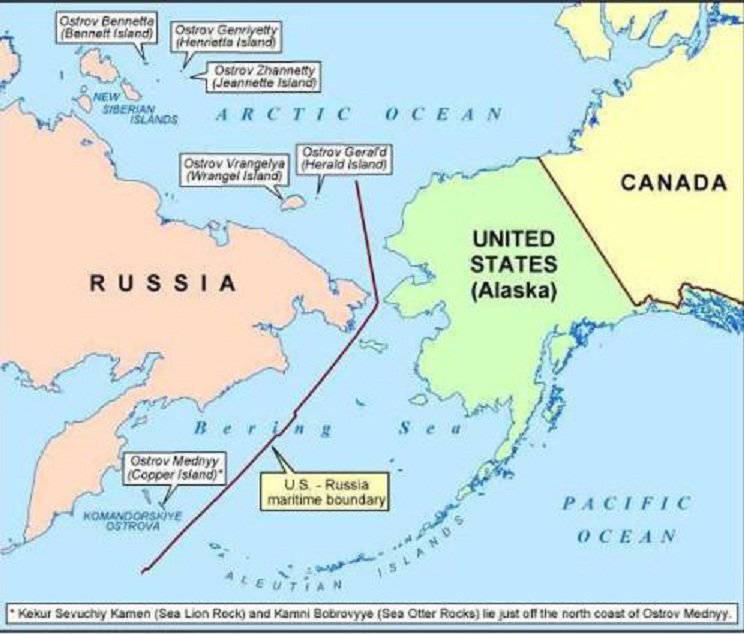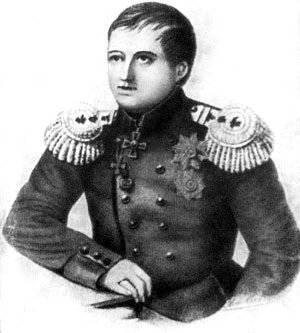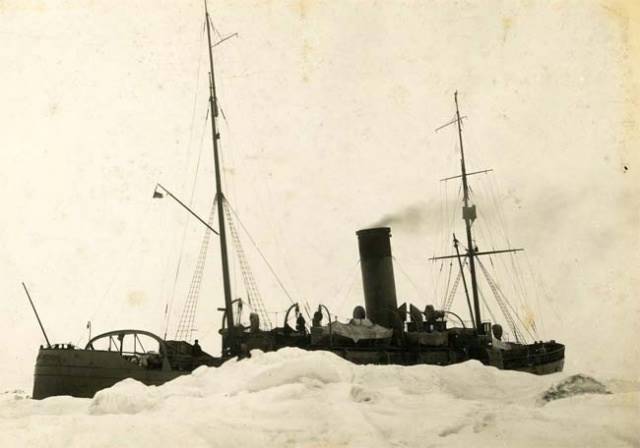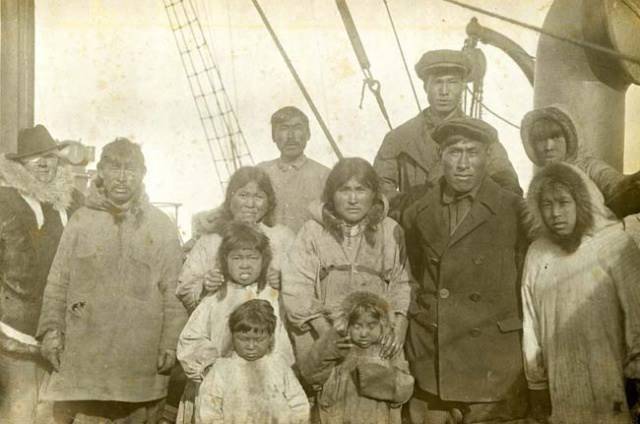FULLY Russian land
It was on these days, 3 on June 1924, that the leadership of the Marine Forces in the Far East received a decree written by the RKKF command and the Main Hydrographic Office that demanded an expedition to send the Wrangel Island located on the border of the Chukchi and East Siberian seas. The occasion served news that on this piece of Russian land over the past three years, representatives of the three powers, England, Canada and the USA, raised their flags.

During the archaeological excavations carried out on Wrangel Island, it is known that the first people, Paleo-Eskimos, appeared on this land more than one and a half thousand years BC. In the 1787 year, Russian navigator Gavriil Sarychev, exploring the shores of Northeast Siberia, in the course of interviewing local residents and based on his own observations, expressed the hypothesis that an unknown hitherto unknown land could exist beyond the strait, now called the Long strait. And in the twenties of the 19 century, a Russian explorer, Ferdinand Petrovich Wrangel, also after meeting with representatives of the Chukchi tribe, sketched a rough description of the land. Her Eskimos saw from Cape Yakan on clear days, and there during the storms their fishing boats took down. Later, having precisely determined the location of the island, Wrangel made dog sledding attempts to reach it, but open water blocked the way.
 In 1828, Vice-Admiral Gabriel Sarychev decided to organize a new expedition to search for a mysterious land, which, however, did not take place. And in the 1849 year, Briton Henry Kellett discovered the island of Herald, which he named so in honor of his ship. To the west of it, the navigator saw another island, which he could not reach. So Wrangel Island got its first name - "Land of Kellett." In 1867, the American whaler and at the same time researcher Thomas Long stumbled upon this island. Knowing about the research of Ferdinand Wrangel, who described the land and was trying to get on it, Long named the island in his honor.
In 1828, Vice-Admiral Gabriel Sarychev decided to organize a new expedition to search for a mysterious land, which, however, did not take place. And in the 1849 year, Briton Henry Kellett discovered the island of Herald, which he named so in honor of his ship. To the west of it, the navigator saw another island, which he could not reach. So Wrangel Island got its first name - "Land of Kellett." In 1867, the American whaler and at the same time researcher Thomas Long stumbled upon this island. Knowing about the research of Ferdinand Wrangel, who described the land and was trying to get on it, Long named the island in his honor.In the 1881 year, a steam cutter "Thomas Corwin" under the command of the American Kelvin Hooper approached Wrangel Island. He knew that as a result of the sale of Alaska according to the Washington Convention in March 1867, America received a whole group of islands. He also knew that Wrangel Island was not among them. However, this did not stop the brazen Yankees, he landed on our land, proclaimed it "New Colombia" and hoisted the US flag on it. A month later, another ship sailed from America. Captain Berry, who commanded the Rogers, unlike his compatriot, had crumbs of conscience and, familiar with the works of Ferdinand Wrangel, persuaded Hooper to return the island to its original name. In subsequent years, the Americans declared the island their patrimony. The only competitors who could lay claim to him, they thought ... no, not Russians, but the British.
After several decades, the Russian government finally took a response. In the 1911 year, sailors of the Vaigach icebreaker restored justice by raising a Russian flag on the island. However, in 1914, after the start of the First World War, the Canadian brigantine Karluk, which was trapped in ice, died near the Wrangel Island. She left the port of Nome, located in Alaska, under the leadership of the enterprising anthropologist Stefanson. The team managed to get over the ice to Wrangel Island and settle there, hunting for food and exploring the area. Domestic icebreakers Vaigach and Taimyr, located nearby, twice during the summer of 1914, tried to save them, but could not break through the ice. The approached American cutter "Bear" also failed. The crew of the brigantine was removed from the island only in September by the Canadian schooner King and Wing.

In the autumn of 1916, Russia in a special message, including an application with a map, informed all the allied and neutral states that the Arctic islands located on the Asian coast of our country (including Wrangel Island) are a continuation of the Siberian continental plateau. territory. However, Wrangel Island very much liked Canada (which was part of the British Empire), namely the polar explorer Stefanson, who launched a whole campaign to develop the island at home. To support this enterprise, the anthropologist even decided to get official status, first from the Canadian, and later - the British government. However, his proposal was rejected.
This did not bother Wilhelmur Stephanson at all. Having declared his support for the authorities and seizing the favorable moment while the Civil War was going on in the Far East, he sent five colonists to the island, who in September 1921 had founded the first settlement and raised the British flag. The squad included Canadian Alan Crawford, Halle Americans, Maurer and Knight, Ada Blackjack Eskimo, serving as a servant and cook, as well as seven sled dogs. The expedition had little food, since Stefanson was counting on hunting. The first winter was successful for the colonists; they lost only one dog. However, due to the ice conditions throughout the entire summer of 1922, the vessel was unable to approach the island with a shift, and the mountain interventionists had to stay one more winter. Already in autumn, the gunet “Magnit” under the command of Lieutenant of the White Army, von Dreyer, tried to break through to Wrangel Island, but the ice judged differently. For what purpose, "Magnet" sailed to Wrangel Island is not known for certain. It is possible to curb the activities of the organization Stephanson, or to assist them, of course, for a fee. But soon the White movement in the Far East was defeated, and the crew of the Magnit went into exile. At the same time, the head of the Canadian government officially declared the island a territory of the British Empire. It is curious that on the maps of the newly published English reference books Wrangel Island was still painted in Russian colors.
The second winter was a bit harder for the colonists. The hunt failed, and the food supply ran out. At the end of January 1923, desperate polar explorers Crawford, Halle and Maurer went to the mainland for help. Nobody ever saw them again. Knight reached April and died of scurvy. Ironically, only an uneducated twenty-five-year-old Eskimo Blackjack survived. Alone on the island, she managed to reach for the arrival of the 19 rescue ship in August 1923.
But on this foreign invasion of Wrangel Island is not over. The Americans, continuing to consider the island as their territory, urgently sent a whole batch of settlers in the 1923 year in order to stake out a place, organize a colony and establish a local craft. Twelve Eskimos landed on the island (including women and two children), as well as geologist Charles Wells. Representatives of the USSR tried to solve the problem diplomatically, but they, alas, did not work. It was then that it was decided to send a special hydrographic expedition to the island, which was supposed to clear the island of any foreign contagion and simultaneously conduct a number of research projects. The well-known Russian geodesist, Boris Davydov, who was one of the best polar captains of the new time, a brilliant officer and hydrograph, was entrusted to lead this campaign.
Despite the courage and bravery shown in the battles, and which were confirmed by a number of military orders, he did not want to become an admiral. He was attracted to something else, he saw how he carried out a detailed inventory of the seas and coasts, was the compiler of new maps and reliable locations .... When the war ended, the prisoners were sent home. Once in Petersburg, Davydov entered the hydrographic department of the Maritime Academy. Two years passed in hard work. Lectures, smart devices, scientific books. Then another two years were devoted to practical exercises in geodesy and astronomy in Pulkovo. Davydov successfully overcame all the difficulties and immediately upon completion was included as a member of a large Hydrographic expedition to the waters of the Arctic Ocean. In 1910, the Vaigach and Taimyr icebreakers set off on their first voyage. Together with Davydov, such famous officers as Zhokhov, Brusilov, Lavrov, Neupokoev served them. All of them went hiking on their own, all were talented and young. During the trip, a survey was carried out of the Chukchi coast, which corrected and supplemented the maps, and also collected unique materials on the biology and hydrology of the sea.
In 1913, Davydov was allowed to lead the Hydrographic Expedition to explore the Eastern Ocean. The expedition sailed the Pacific seas for nine years, exploring each island and each reef in its path. In the Far East, Boris Vladimirovich prepared a whole galaxy of excellent hydrographers, created new methods and principles for studying the sea. After the Bolsheviks came to power, Colonel Davydov, like the other officers, took off his shoulder straps. When the Far East passed into the hands of whites, many officers again put epaulets on their uniforms. But not Davydov. It is known that when he came to the Maritime Assembly, he, in silence, listened from his colleague sarcastic remarks about the absence of asterisks, and then replied: “Dear person, I am no longer a boy. And if he took off his shoulder straps, then not to put them on in a week. ”
After the final Soviet power was established in Primorye, Davydov was appointed head of the Far East Ship Safety Directorate. For his outstanding achievements in the field of geography, he was awarded the highest scientific award, a gold medal to them. Litke.
To carry out the operation Boris Vladimirovich was provided with a gunboat "Red October", which served about eighty sailors. This ship was built in 1896 year by order of Russia in Copenhagen. Initially, it was a port icebreaker called "Reliable", serving the Vladivostok commercial port. The displacement of the vessel was more than one and a half thousand tons, the length was fifty-five meters, the draft was four meters. For work in port waters, he was quite a powerful vessel, but no one knew how he would show himself in a long and dangerous journey to the north.
Boris Davydov's outstanding abilities and his vast experience were already apparent at the initial stage of the operation. In an unprecedentedly short time - just a month - the preparation for the polar expedition was completed. Before sending, the command of the Marine Forces of the Far East issued him a special prescription, which emphasized that "in the inevitable collision caused by the opposition of foreigners, the main goal of the expedition must act in accordance with the actual balance of forces on both sides, until the arrest of the crew of a foreign vessel."
20 July 1924 of the year “Red October”, on which guns were installed, left Vladivostok and six days later came to Petropavlovsk-Kamchatsky. Here the expedition members learned that the Americans sent the light cruiser almost simultaneously with them to Wrangel Island. According to press reports from the United States, the main purpose of this voyage was to confirm their “rights” to the island. However, the propeller and the steering were damaged one by one on the ship. The hike was over, but the whaling schooner “Herman” set off from Alaska to replace the failed warship in early July. Known and its further fate. Due to the difficult ice conditions, the vessel could not reach Wrangel Island. The Americans had to be content with the October 4 raising its flag on Herald Island, which lies seventy kilometers east of the intended target.
August 3 "Red October" reached Providence Bay. Here the crew replenished their reserves of fresh water and coal. Coal was taken with a large excess, falling asleep in special enclosures, built on the upper deck. 9 August in the bay of Lawrence on board were taken three Chukchi with a pair of sled dogs. For ten days the “Red October” drifted in the ice and finally reached Cape Uering, the extreme eastern point of Wrangel Island. In the next four days, a detachment of Pacific sailors disembarked the USSR national flag, and in the bay, under an interesting name, Doubtful, found a cabin with thirteen Eskimos (one child was born in winter) under the command of American Wells. According to the memories of Davydov, temporary inhabitants were terribly frightened at the sight of our sailors. Of course, there were no documents explaining the legality of their presence.

In Rogers Bay, a bottle was found with a note written by Wells for the captain of an American vessel indicating the location of his group on the island. The detainees said that before being sent they were told that the island was wholly and completely owned by the United States, and therefore there would be no problems with the Soviets. In many bays of the island, masts stuck on which American flags were flying, and earlier, most likely, flags of the British Empire and Canada. Curious Americans did not waste time. They were illegal prey of polar bears and fur animals. During the search, they found 38 bear skins and 57 skins of white foxes, as well as a lot of papers with valuable research on the Russian island and a whole geological collection.
23 August "Red October" was removed from the anchor and, along with the arrested "colonists" and their belongings, went on a difficult and dangerous journey home. At the end of September, an icebreaker caught ice at Cape Schmidt, located in the Long Strait, but a sudden storm helped the ship to free itself. Only by October 3 the gunboat managed to get to Cape Dezhnev. Overcoming the ice led to an overrun of coal, and when the icebreaker stopped in Providence Bay, the fuel remained for only half an hour. And fresh water is completely over. The expedition returned to Vladivostok on October 29. Began the Soviet-American negotiations on the extradition of the colonists. The American consul said that the United States government does not have the means to transport the Eskimos to their homeland (this is despite the fact that they recognized them as US citizens). In the end, the Red Cross gave the necessary one and a half thousand dollars for tickets. Three of them never returned home. Charles Wells, who was the expedition leader, died of pneumonia in Vladivostok. Here one of the children died, weakened by a heavy march. Another child drowned by negligence on the way back.
In honor of this glorious campaign, which confirmed the rights of our Motherland to own Wrangel Island, the Red October gunboat was awarded the Honorary Revolutionary Red Banner. Each of the members of the expedition was awarded the badge "For an expedition to the island of Wrangel."
More recently, at an auction in the United States such a badge was sold for forty-seven thousand dollars. Unfortunately, for Boris Davydov himself this journey was the last. In the campaign, he undermined his health, and after returning he caught a bad cold. A weakened body could not overcome the ailment ...
Shortly before his death, the Academy of Sciences decided to rename Wrangel Island to Davydov Island. But Boris Vladimirovich decisively forbade doing so. One of his main principles was “never to change old names on maps”. After the death of the great hydrographic surveyor, the ship "Red October" received his name. And on November 4, the leadership of the USSR sent a special memorandum to the US authorities, drew attention to "violation of the territorial boundaries of the Union by foreigners traveling along the northern coasts of Siberia." It also contained the requirements "to continue to be guided by the provisions of international law and contractual obligations."
In 1926, the first Soviet commercial settlement Ushakovskoye appeared on Wrangel Island, named after its founder. Later a weather station was built here, which became one of the largest in the Arctic. There was also a military facility on Wrangel Island - a strategic airfield. There is also a legend about the construction of the Gulag camps on this land. However, there is no evidence of this. In the 1976 year, the Wrangel Island Reserve was created to protect and study the flora and fauna of the Arctic islands, which includes the small island of Herald. In the 1997 year, the reserve area was increased by including the water area surrounding the island, twelve nautical miles wide, which grew to twenty-four in 1999. By 2003 year, the last of the three settlements was empty. From this point on, only scientists and natural scientists from different countries come to Wrangel Island for joint research of a unique local ecosystem.
Approximately nine thousand years ago, mammoths came to Wrangel Island, which was still part of the mainland. When the glacier melted and the sea moved in, a small group of animals was cut off. Finally starved extinct about three and a half thousand years ago.
In the 1975 year, twenty musk oxen were brought here from America by plane. They were released into the wild, and half of them soon died from climate change. But the remaining ten scattered around the island and in a few years mastered unfamiliar territory. In 1977, the first calves were born.
Today, according to some high-ranking Americans, as well as members of extremist nationalist groups (for example, the State Department Watch), the United States has rights to eight Russian-controlled islands in the Arctic (including Wrangel Island). You can find similar lines in their press: “Surprisingly, our government has so drawn the frontier that these islands of Alaska are left behind Russia. But, being an executive agreement, it can be canceled with one stroke of the President’s (Obama’s) and Secretary of State’s (Clinton )’s pen. ” Or: “Wrangel Island became ours in the 1881 year, when the landing from the US ship Thomas Corwin landed on it. And another thing: “Now is the time for the Obama administration to defend the rights of the United States to Alaska’s priceless resources. We are winners of the Cold War and must act accordingly. ”
It seems that in the future Russia will have to endure more than one attempt at attempts on its ancestral territories.
Information sources:
-http: //ru.wikipedia.org/wiki/
-http: //repin.info/xfiles/the_capture_by_the_Americans_of_Wrangel_Island
-http: //rus.ruvr.ru/2012_07_11/81057366/
-http: //atnews.org/news/a_vot_i_pretenzii_po_teritorii/2012-02-24-1394
-http: //www.vokrugsveta.ru/vs/article/7685/
Information